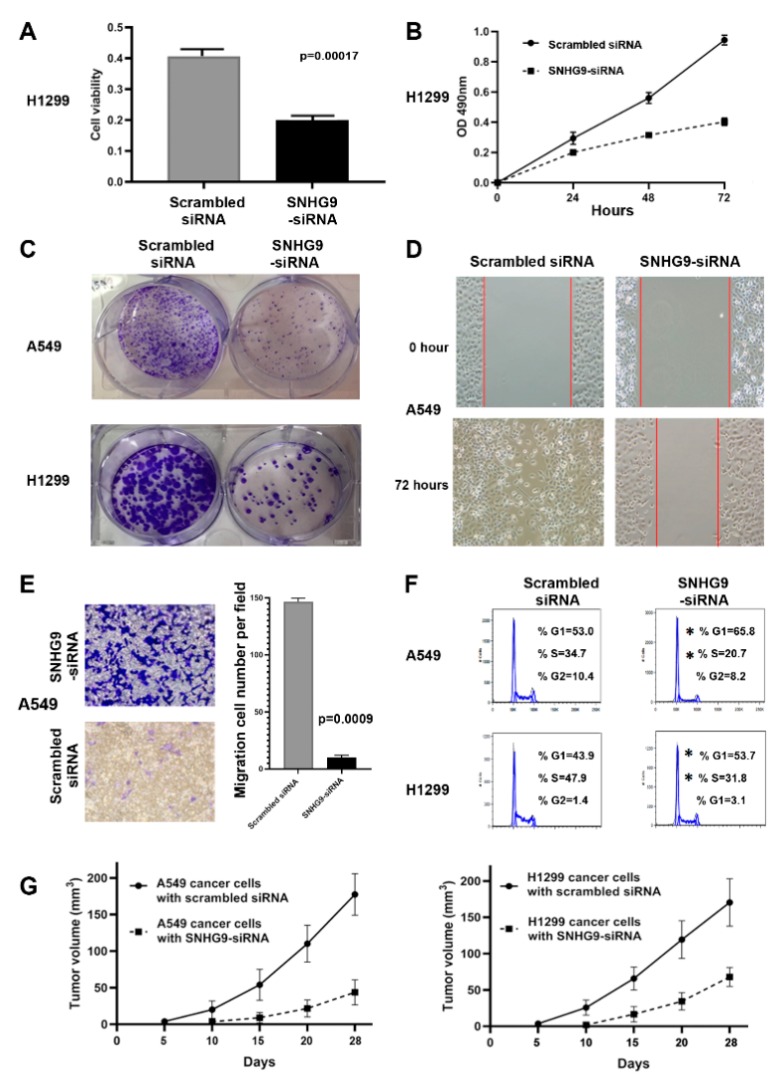Figure 1.
SNHG9 knockdown inhibits the tumorigenicity of A549 and H1299 lung cancer cells. (A) SNHG9 knockdown can significantly reduce cell viability by 72 h. The cell viability is determined by a cell viability assay using Cell Counting Kit 8 (Abcam); (B) SNHG9 knockdown can suppress cell proliferation in the cancer cells treated with SNHG9-siRNA; (C) SNHG9 knockdown significantly inhibits colony formation of cancer cells. The figure shows the results one week after the cells are seeded in the plates (34.8 mm diameter). (D) In the wound-healing assays, cancer cells transfected with SNHG9-siRNA show a slower gap closure compared with cells transfected with scrambled siRNA. The figure only shows the results of A549 cells from the time points 0 and 72 h, respectively. (E) Transwell migration assays show that SNHG9 knockdown can constrain migration and invasion of A549 cancer cells. The migratory cells are counted, and the results are expressed as the mean number of migratory cells ± SD/selected microscopic field (n = 5). The number of migrated cells was evaluated by counting 5 random fields at ×50 magnification. The figure shows the results from the time point 24 h of A549 cells. (F) Knockdown of SNHG9 in lung cancer cells (A549 and H1299) elevates the percentage of the cancer cells in the G1/G0 phase and reduces the percentage of S phase (*, p < 0.05). (G) Quantification of the tumor size over the time in vivo experiment shows that tumor growth in the mice injected with SNHG9-siRNA cancer cells (A549 and H1299) was significantly lower than in the mice injected with the cells transfected with scrambled siRNA. Tumor sizes (mean ± SD3) were measured at the indicated intervals and plotted.

